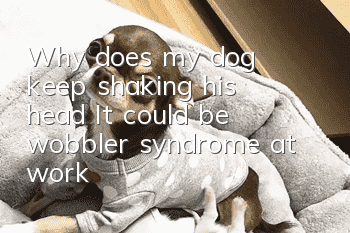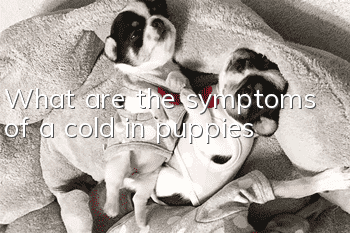Why does my dog keep shaking his head? It could be wobbler syndrome at work!

When a dog suddenly wobbles, we call it cervical myelopathy, also known as wobbler syndrome.
Dobermans and Great Danes are the most commonly affected breeds. A recent veterinary case database survey showed that 4.2% of Great Danes and 5.5% of Doberman Pinschers suffer from wobbler syndrome. The course of the disease is often typical of large breeds in Dobermans and in Great Danes, typical of giant breeds. Other breeds include Rottweilers, Mastiffs, Weimaraners, German Shepherds, Bernese Mountain Dogs, Swiss Mountain Dogs, but any large or giant breed can be affected.
What are the symptoms of cervical myelopathy?
Dogs with wobbler syndrome often have a "wobbly" gait, mostly in the hind legs (hence the name "wobbler"). The waddling gait may only be seen when the dog is walking slowly on a smooth floor. They may walk with their heads down, which usually indicates pain. In more advanced stages of the disease, problems will appear in the limbs. The dog may be unable to stand, appear very weak, or even trip over its front limbs. Approximately 5% of dogs with wobbler syndrome develop acute quadriplegia.What kind of dogs does cervical myelopathy often occur?
It is mainly large dogs and giant dogs that suffer from wobbler syndrome. Small dogs occasionally get the disease, but it's less common. In one study of 104 dogs with wobbler disease, only 5 were small dogs.Dobermans and Great Danes are the most commonly affected breeds. A recent veterinary case database survey showed that 4.2% of Great Danes and 5.5% of Doberman Pinschers suffer from wobbler syndrome. The course of the disease is often typical of large breeds in Dobermans and in Great Danes, typical of giant breeds. Other breeds include Rottweilers, Mastiffs, Weimaraners, German Shepherds, Bernese Mountain Dogs, Swiss Mountain Dogs, but any large or giant breed can be affected.
Is cervical myelopathy a genetic disease?
Calculate.What are the treatments for cervical myelopathy?
It can be treated with medication or surgery. Medical treatment usually uses anti-inflammatory drugs (hormonal or non-steroidal) along with restriction of activity. Because they have neck problems, collars should not be used and a harness is highly recommended. Random articles
- Do mosquitoes bite dogs?
- Teddy vomiting
- Boxer dog daily care
- Can dogs eat fish food?
- How big and heavy can a golden retriever grow?
- Can a golden retriever be kept as a native dog?
- Teacup Teddy grows fastest in what months
- How powerful is the self-healing ability of dogs?
- What does it mean when a dog wags its tail?
- What should I do if my dog gets parvovirus? Can it still be saved?



